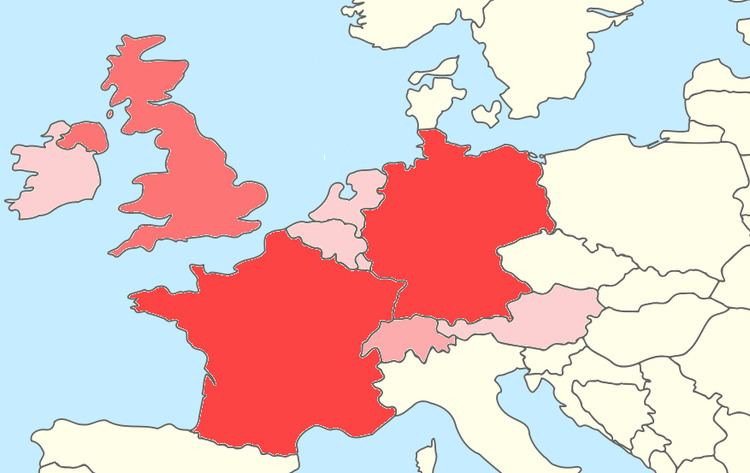 | ||
The United Nations Educational, Scientific and Cultural Organization (UNESCO) has designated 131 World Heritage Sites in Western Europe. These sites are located in 9 countries (also called "state parties"); France and Germany are home to the most with 37, while Liechtenstein and Monaco have no sites. There are ten sites which are shared between state parties both in and out of Western Europe. The first site from the region to be included on the list was the Aachen Cathedral in Germany in 1978, the year of the list's conception.
Each year, UNESCO's World Heritage Committee may inscribe new sites on the list, or delist sites that no longer meet the criteria. Selection is based on ten criteria: six for cultural heritage (i–vi) and four for natural heritage (vii–x). Some sites, designated "mixed sites," represent both cultural and natural heritage. In Western Europe, there are 120 cultural, 9 natural, and 2 mixed sites.
The World Heritage Committee may also specify that a site is endangered, citing "conditions which threaten the very characteristics for which a property was inscribed on the World Heritage List." Presently, none of the sites in Western Europe are currently listed as endangered, though two German sites were previously listed: the Cologne Cathedral was marked as endangered in 2004 due to the construction of several high-rise buildings around it, but it was removed from the list in 2006; and the Dresden Elbe Valley site was listed in 2006 in hopes of halting the construction of the four lane Waldschlösschen Bridge through the valley. When construction continued as planned, it became the second site to be delisted as a World Heritage in 2009, the first being Oman's Arabian Oryx Sanctuary two years earlier.
Legend
The list below uses a cultural definition of Western Europe (which includes Ireland and the United Kingdom, contrary to the United Nations Statistics Division's definition). It also omits six sites outside of Europe belonging to European state parties: Curaçao (Netherlands), New Caledonia (France), Reunion Island (France), Gough Island (United Kingdom), Henderson Island (United Kingdom), and Bermuda (United Kingdom). These sites are included in the African, American, and Oceania lists. The table is sortable by column by clicking on the at the top of the appropriate column; alphanumerically for the Site, Area, and Year columns; by state party for the Location column; and by criteria type for the Criteria column.
Site – named after the World Heritage Committee's official designation Location – sorted by country, followed by the region at the regional or provincial level and geocoordinates. In the case of multinational or multi-regional sites, the names are sorted alphabetically. Criteria – as defined by the World Heritage Committee Area – in hectares and acres, followed by buffer zones if applicable. A value of zero implies that no data has been published by UNESCO Year – during which the site was inscribed to the World Heritage List Description – brief information about the site, including reasons for qualifying as an endangered site, if applicable